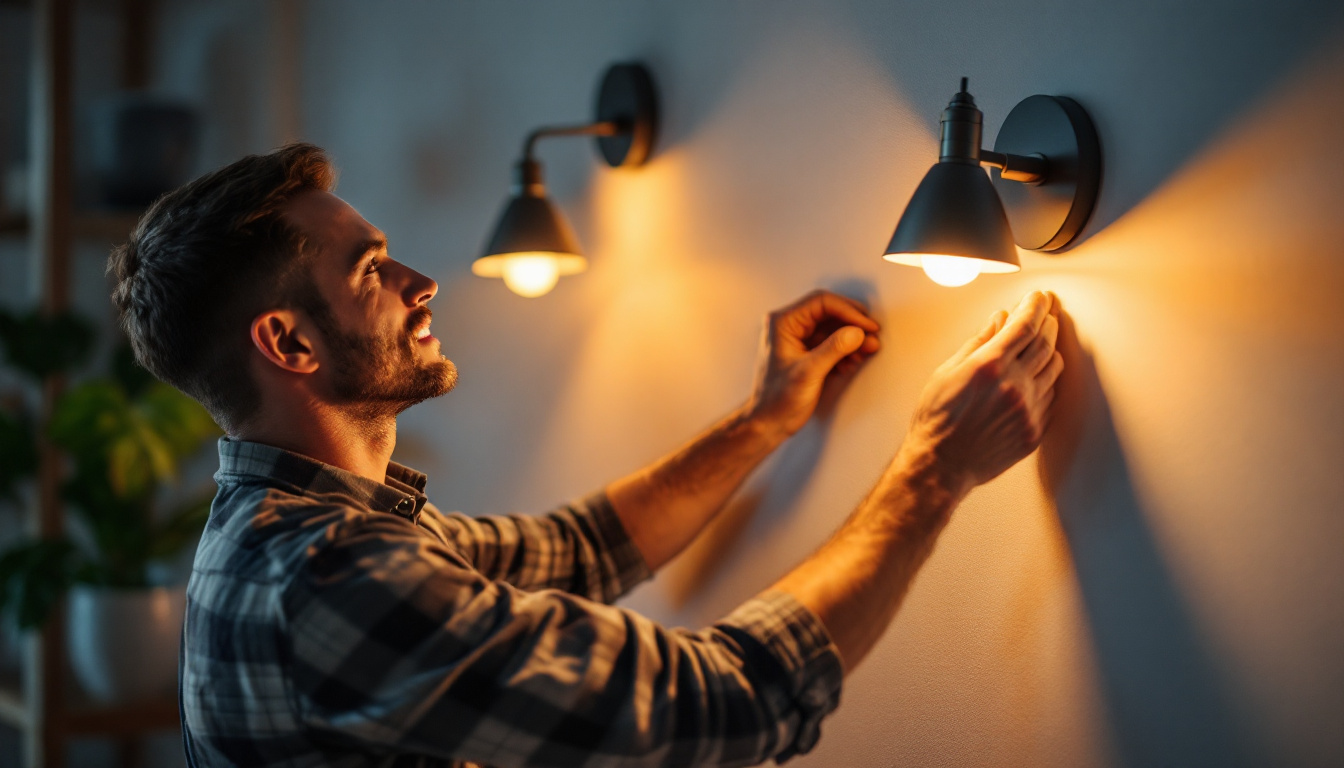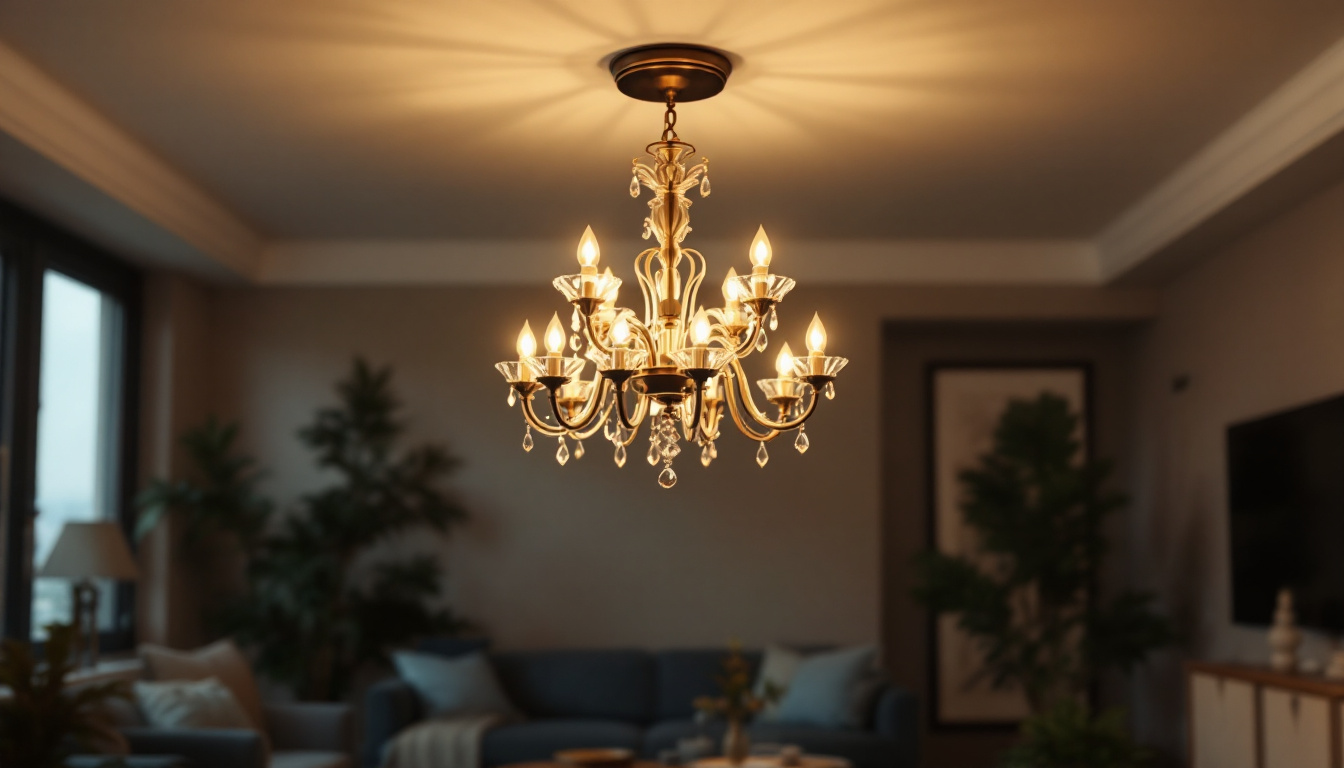
In the ever-evolving world of interior design and construction, the role of lighting has become increasingly significant. For lighting contractors, understanding the nuances of wall-mounted lighting solutions is essential for delivering high-quality projects that meet client expectations. This article delves into the importance of wall lighting, its benefits, and considerations for lighting contractors.
Wall lighting refers to fixtures that are mounted directly onto walls, providing both functional and aesthetic benefits. These fixtures can include wall sconces, picture lights, and recessed lighting, each serving unique purposes in a space. Understanding the various types of wall lighting and their applications is crucial for lighting contractors aiming to enhance their service offerings.
There are several types of wall lighting fixtures that contractors should be familiar with. Each type serves a different purpose and can dramatically affect the ambiance of a room.
Wall lighting offers numerous benefits that can enhance the overall design and functionality of a space. Understanding these advantages can help contractors make informed decisions when recommending lighting solutions to clients.
Moreover, wall lighting can also play a significant role in enhancing safety and security in a home. By strategically placing wall sconces along hallways or outdoor areas, visibility is improved, reducing the risk of accidents during the night. Additionally, well-lit exterior walls can deter potential intruders, providing peace of mind for homeowners. The versatility of wall lighting means that it can be tailored not only for aesthetic purposes but also for practical applications, making it an essential component of any comprehensive lighting plan.
Another important aspect to consider is the energy efficiency of modern wall lighting options. With the advent of LED technology, wall fixtures can now provide bright illumination while consuming significantly less energy compared to traditional incandescent bulbs. This not only helps in reducing electricity bills but also contributes to a more sustainable living environment. As clients become increasingly conscious of their carbon footprint, recommending energy-efficient wall lighting solutions can enhance a contractor’s reputation and appeal to eco-minded consumers.
When planning wall lighting installations, several design considerations should be taken into account. These factors can significantly influence the effectiveness and aesthetics of the lighting solution.
The height at which wall fixtures are installed is crucial. Generally, sconces should be mounted at eye level, typically between 60 to 66 inches from the floor. However, the specific placement may vary based on the room’s function and the height of the occupants. For instance, in a hallway, fixtures might be installed higher to avoid obstruction. Additionally, in spaces with high ceilings, such as grand entryways or living rooms, wall lights can be positioned higher to create a dramatic effect, drawing the eye upward and emphasizing the verticality of the space. It’s also important to consider the proximity to furniture; sconces should be placed far enough away from seating areas to avoid glare while still providing adequate illumination for reading or other activities.
The style and finish of wall lighting fixtures should complement the overall design theme of the space. Whether the design is modern, traditional, or eclectic, selecting fixtures that harmonize with the existing décor is essential. Additionally, finishes such as brass, chrome, or matte black can add distinct character to the lighting scheme. Beyond just the finish, the shape and design of the fixtures can also play a pivotal role in the ambiance of a room. For instance, sleek, minimalist designs can enhance a contemporary aesthetic, while ornate, vintage-inspired fixtures can add a touch of nostalgia and warmth. Furthermore, layering different styles of lighting—such as combining wall sconces with pendant lights or chandeliers—can create a more dynamic and visually interesting environment, allowing for both functional and decorative purposes to coexist harmoniously.
With growing awareness of environmental issues, energy efficiency has become a critical consideration for lighting contractors. Wall lighting solutions can contribute to a more sustainable approach to design. By prioritizing energy-efficient options, contractors can help reduce the carbon footprint of buildings and promote a healthier environment. This shift towards sustainability is not only beneficial for the planet but also aligns with the increasing demand from consumers for eco-friendly products and practices.
LED wall fixtures are increasingly popular due to their energy efficiency and longevity. Unlike traditional incandescent bulbs, LEDs consume significantly less power and have a much longer lifespan, making them a cost-effective choice for both contractors and clients. Furthermore, the reduced heat output of LEDs contributes to lower cooling costs in warmer climates. In addition to their practical benefits, LED technology also offers a wide range of design possibilities, with various shapes, sizes, and color temperatures available to suit any aesthetic. This versatility allows designers to create visually appealing environments while still adhering to energy-efficient principles.
Incorporating smart technology into wall lighting can enhance energy efficiency and convenience. Smart wall fixtures can be controlled remotely, allowing users to adjust brightness levels and colors according to their preferences. This flexibility not only improves user experience but can also lead to energy savings when used effectively. Moreover, smart lighting systems can integrate with other home automation technologies, such as motion sensors and timers, to optimize energy usage further. For instance, lights can be programmed to turn off automatically when a room is unoccupied, ensuring that energy is not wasted. As the Internet of Things (IoT) continues to evolve, the potential for smart lighting solutions to contribute to sustainable living becomes even more significant, paving the way for innovative applications in residential and commercial spaces alike.
Proper installation is key to ensuring that wall lighting functions effectively and safely. Lighting contractors must adhere to best practices to achieve optimal results.
Before installation, it is essential to assess the existing wiring and electrical systems. Contractors should ensure that the circuits can handle the load of the new fixtures and that all installations comply with local electrical codes. Properly securing wiring and connections is critical to prevent hazards and ensure longevity.
Once the fixtures are installed, thorough testing is necessary. This includes checking for proper functionality, ensuring that the light output meets design expectations, and making any necessary adjustments. Lighting contractors should also educate clients on how to operate and maintain their new wall lighting systems effectively.
Effective communication with clients is vital for successful lighting projects. Lighting contractors should take the time to educate clients about the benefits and options available in wall lighting.
Every client has unique preferences and requirements. Engaging in detailed discussions about their vision for the space can help contractors tailor their recommendations accordingly. Understanding the intended use of the room, desired ambiance, and aesthetic preferences will guide the selection of appropriate wall lighting solutions.
Clients may not be familiar with the maintenance needs of wall lighting fixtures. Providing clear instructions on how to clean, replace bulbs, and troubleshoot common issues can enhance client satisfaction and ensure the longevity of the installation.
Staying updated on trends in wall lighting can give contractors a competitive edge in the market. Understanding current styles and technologies can help in making informed recommendations to clients.
Minimalism continues to influence interior design, and wall lighting is no exception. Sleek, unobtrusive fixtures that blend seamlessly with the wall are increasingly popular. This trend emphasizes functionality while maintaining a clean aesthetic.
Conversely, vintage and retro-inspired wall lighting fixtures are making a comeback. These designs often feature intricate details and warm finishes, appealing to clients seeking a nostalgic touch in their interiors. Lighting contractors should be prepared to offer a range of styles to meet diverse client tastes.
Wall lighting is a vital component of modern interior design, offering both functional and aesthetic benefits. For lighting contractors, understanding the various types of wall fixtures, their benefits, and installation best practices is essential for delivering exceptional results. By staying informed about trends and maintaining open communication with clients, contractors can enhance their service offerings and contribute to the creation of beautifully lit spaces.
Incorporating wall lighting solutions not only elevates the design of a space but also promotes energy efficiency and sustainability. As the industry continues to evolve, lighting contractors who embrace these changes will be well-positioned for success in a competitive market.
Ready to take your lighting projects to the next level? At LumenWholesale, we provide lighting contractors with an unparalleled selection of spec-grade wall lighting fixtures that combine quality, affordability, and convenience. Say goodbye to inflated markups and hello to our competitive wholesale prices, backed by the reliability and performance you need to create stunning, energy-efficient spaces. With free shipping on bulk orders, LumenWholesale is your go-to source for premium lighting without the premium cost. Elevate your lighting solutions today by visiting Wholesale Lighting at the Best Value and discover the difference quality lighting can make.

Discover why LED flood lights are revolutionizing the lighting industry and what every contractor needs to know.

Discover the frequent pitfalls lighting contractors encounter with 8-foot LED shop lights.

Explore innovative strategies and expert tips from lighting contractors on selecting and installing semi flush chandeliers.

Discover the essential insights lighting contractors need to know about exit signs, from compliance standards to innovative design solutions.